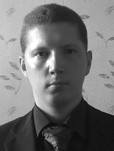Benefits of new physical education technology for senior preschoolers
Фотографии:
ˑ:
Candidate A.I. Kavokin1
PhD, Associate Professor N.G. Mikhailov1
1Moscow City Pedagogical University, Moscow
Modern school physical education (PE) science gives a high priority to the children’s physical development facilitating educational process design. The study analyzes benefits of a new educational technology for the senior preschoolers’ motor activity optimizing purposes with application of a variety of traditional and modern physical education tools. The study data demonstrate benefits of the new age-, gender- and physical-fitness-specific PE technology customizable to the motor needs of the 5-7 year-olds and supported by calculations of the optimal physical loads for each group. The specific group models are driven by a regression analysis with multiple regression equations making it possible to compute the required group-specific physical loads having the physical fitness test rates – which are known to correlate with the latter. The models provide the toolkit to compute the age- and gender-specific recommended physical loads for senior preschoolers based on the input physical fitness test data.
Keywords: educational technology, motor activity, wave training machines, Wushu gymnastics, active games, mathematical model, optimal physical activity, preschoolers.
References
- Akhutina T. V. Zdorovyesberegayuschie tekhnologii obucheniya: individualno-orientirovanny podkhod [Health-promotion learning technologies: personality-centered approach]. Shkola zdorovya, 2000, vol. 7, no. 2, pp. 21-28.
- Babenkova E. A. Ozdorovitelnye tekhnologii v sisteme fizicheskogo vospitaniya doshkolnikov [ Recreational technologies in preschool physical education system]. Innovatsionnye tekhnologii v sporte i fizicheskom vospitanii podrastayushchego pokoleniya [Innovative technologies in sports and physical education of younger generation]. Proc. 4th res.-practical conf., May 15-16, 2014. Moscow: MSPU, PIFK publ., 2014, pp. 196-198 p.
- Golovin O.V. Vliyanie normirovannoy dvigatelnoy aktivnosti tsiklicheskogo kharaktera na morfofunktsionalnoe i psikhofiziologicheskoe razvitie doshkolnikov: dis. kand. biolog. nauk [Effect of dosed cyclic motor activity on morphofunctional and psychophysiological development of preschoolers. PhD diss.]. Novosibirsk, 1999. 153 p.
- Isaenko Y.M. Pedagogicheskoe obespechenie dvigatelnoy aktivnosti detey 3–4 let v usloviyakh doshkolnogo obrazovatelnogo uchrezhdeniya: dis. kand. ped. nauk [Pedagogical support of motor activity of 3-4 year-olds in preschool educational institution. PhD diss.]. Belgorod, 2012, 192 p.
- Kovalko V.I. Zdorovyesberegayuschie tekhnologii [Health promotion technologies]. Moscow: Vako publ., 2004, 296 p.
- Kuchma V.R., Sokolov S.B. Povedencheskie riski, opasnyie dlya zdorovya shkolnikov XXI veka [Behavioral risks dangerous for health of schoolchildren of the XXI century]. Moscow: NMRC of Children's Health Ministry of Health of Russia publ., 2017, 170 p.
- Mikhaylov N.G., Kavokin A.I. Ispolzovanie metodov volnovoy biomekhaniki dlya uvelicheniya dvigatelnoy aktivnosti detey doshkolnogo vozrasta [Wave biomechanics methods to increase motor activity of preschoolers]. Fizicheskaya kultura: vospitanie, obrazovanie, trenirovka, 2014, no. 6, pp. 32-34.
- Runova M.O. Dvigatelnaya aktivnost rebenka v detskom sadu [Child's motor activity in kindergarten]. Moscow: Mozaika Sintez of publ., 2000, 256 p.
- Stepanenkova E.Y. Teoriya i metodika fizicheskogo vospitaniya i razvitiya rebenka [Theory and Methods of Physical Education and Child Development]. Study guide. Moscow: Akademiya publ., 2001, 368 p.
- Filippova S.O., Ponomarev G.N. [ed.]. Teoriya i metodika fizicheskoy kultury doshkolnikov [Theory and methods of physical education of preschool children]. Study guide. St. Petersburg: Detstvo–Press publ., 2008, 656 p.


